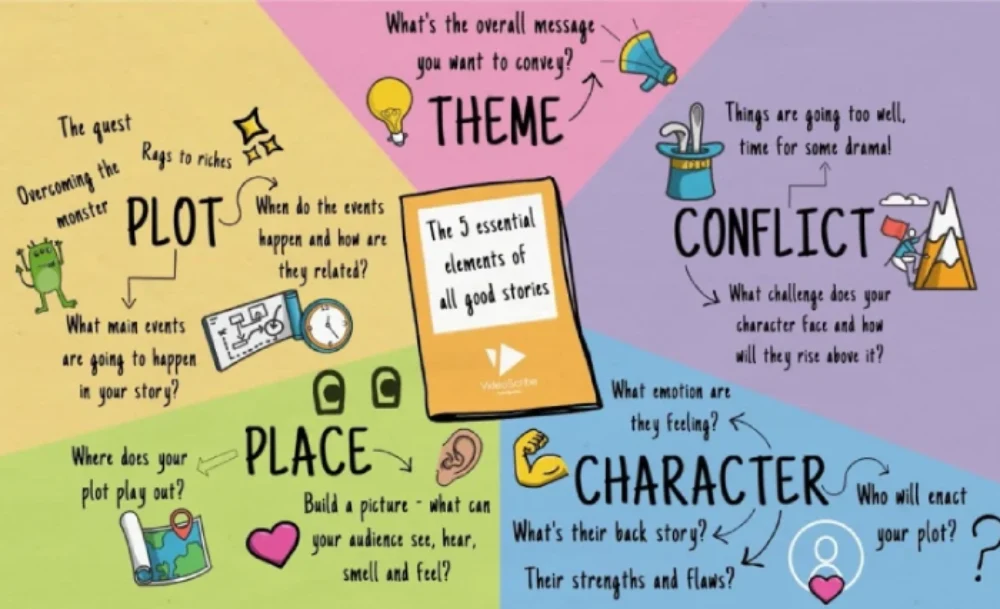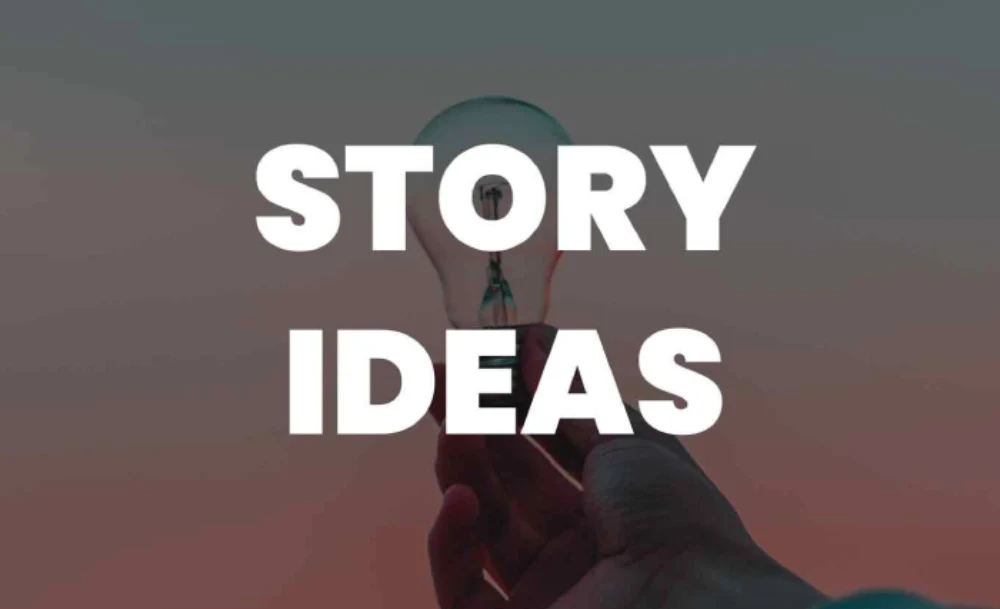Your Topics Multiple Stories : Since telling stories is an art, many authors feel that one story is insufficient. Whether you’re writing essays, fiction, or social media postings, being able to manage several tales at once is a talent that can improve your work. However, how can you maintain the plot while balancing multiple narratives?
This article explains every aspect of posting multiple stories and managing your topics, including managing multiple themes, submitting multiple stories, and adult storytelling topics.
Storytelling Topics for Adults
Adult storytelling embodies a range of emotions, themes and points of view. Children’s stories impart moral lessons; adult storytelling has psychological nuances and themes of relationship and society.
Storytelling Themes People Want To Read About
These themes are worthy of storytelling and focus on adult audiences:
Psychological Thrillers – Stories that examine human nature, lies, and mind games.
Romance and Relationships – Love, heartbreak, personal growth through relationships.
Historical Fiction – A collection of fictional characters and narratives that can be based in real-world occurrences.
Social Issues and Commentary – Explores issues such as poverty, racism, or mental health.
Fantasy and Sci-Fi – On futuristic societies, imaginary worlds, advanced technology.
Revenge – Plotting characters and their just desserts.
How to Choose a Good Topic for Storytelling?

So, when selecting a topic to tell your story:
What feeling am I trying to elicit from the reader?
How will that theme resonate for a contemporary audience?
How can I provide a new approach to this topic?
How to Share Multiple Stories on Other Platforms
The story of Dematerialized took two different approaches depending on the medium used to share it. Here’s how to post with impact:
| Platform | How to Post Multiple Stories | Best Practices |
|---|---|---|
| Post multiple stories in sequence, use interactive stickers. | Make stories engaging with text and polls. | |
| Post multiple story updates throughout all the day. | Do Use high-quality images/videos for better engagement. | |
| TikTok | Create all multiple parts using series hashtags (e.g., #StoryPart1). | Keep all videos under 60 seconds for better reach. |
| Snapchat | Post multiple snaps to tell a full story. | Use captions and emojis to add context. |
Multiple Themes in a Story: How to Do It Right
One theme does not a great story make. The best novels and movies juggle several themes woven together.

Examples of Multiple Themes in well known Stories
| Book/Movie | Primary Theme | Secondary Themes |
|---|---|---|
| The Great Gatsby | The American Dream | Love, Class Struggles, Betrayal |
| Harry Potter | Good vs. Evil | Friendship, Identity, Destiny |
| Game of Thrones | Power Struggles | Family, Betrayal, Redemption |
When Multiple Themes Make More Sense→
Focus on One Central Topic – Let one topic hold up the entire story.
Use Characters to Explore Themes — Assign a theme to each major character.
Symbolism and Motifs Hit on objects or situations that tie to more than one theme.
What to Consider When You Have Too Many Story Ideas?
If your thoughts are overflowing with concepts, here’s how to organize and prioritize:
1.Create a Story Idea Bank
Have a notebook or a digital document with every single idea that pops into your head.
2.Categorize Your Ideas
Group them into categories:
- Short stories
- Books (novels, series)
- Personal essays
3.Combine Similar Ideas
Sometimes, two smaller ideas can come together to form a much stronger and more compelling narrative.
4.Use a Storyboard or Mind Map
So, get to visually organize those ideas and see what all fits where the best.
Urdu Stories Topics: Rich Themes in Urdu Literature
Urdu prose has a classical tradition of storytelling in thematics ranging from rural to urban settings.
Common Stories Themes in Urdu Literature
- Social Issues: Class struggle, women’s rights, corruption.
- Sufism – Reflections on spirituality and philosophy.
- Historical and Folklore Tales – Legends melded with fictional narrative.
- The Romance & Tragedy – Passionate love stories, most of them have turbulent undercurrents.
For example, Mirza Ghalib’s poetry blends love and sorrow in intricate ways that speak to the heart of Urdu storytelling.
Multiple Topics in One Essay: Structuring it Effectively
When writing an essay covering different topics, you need to be sure of your organization.
Multi-Topic Essay Structure – The Best Format
- The introduction should have a unifying theme or general theme (central argument).
- Body Paragraphs – Give each paragraph a specific topic.
- Transitions – Make sure to findsmooth transitions between various subjects.
- Conclusion – Wrap all of it under a shared conclusion.
For example, if you were writing about “Technology and Mental Health,” your sections might include:
- Positive Impact of Technology on Mental Health Feel free to include a brief summary and some bullet points.
- Positive Effects (Social media anxiety disorder, addiction)
- Tips to use technology responsibly
Short Stories Topic Ideas

If you are looking for interesting short story ideas, here are a few creative prompts:
Thriller — a reporter unearths a shocking secret about a renowned politician.
Romance — Two strangers who bump on a train discover that they were childhood sweethearts.
Sci-Fi — A scientist develops a machine to read thoughts, revealing frightening truths.
Dylan, The Last Mortal Girl – Fantasy – A young girl learns that she is the last surviving member of an ancient magical bloodline.
Dealing with Several Stories Simultaneously
It is difficult but not impossible to follow several stories without getting lost.
Top Techniques for Handling Multiple Tales
Follow a Writing Plan – Allocate time to each project.
Take Separate Notes Per Story – Avoid confusion.
Set Deadlines – This keeps you focused.
Pro Tip: Keep multiple projects organized in writing software like Scrivener or Notion.
Best Topics for Story Writing for Grade 3
Storytelling for younger children should be fun, engaging and educational.
Story Writing Topics for 3rd Grade Students
Adventure — “A child finds a hidden cave in their backyard.”
Friendship — “A new student teaches everyone about kindness.”
Animals — “A talking dog helps a little girl solve a mystery.”
The Strength of Multiple Narratives
Having multiple storylines creates depth, suspense and a much fuller experience for the audience. Think of:
The Bible’s Twelve Tribes of Israel — Each family has its separate history, yet together they make one unified story.
Game of Thrones — Different character arcs that eventually converge.
Pulp Fiction – Storytelling out of sync but ties in ways you never expected.
A multiple-narrative approach allows you to:
✅Create suspense (What is going to happen next to each thread?)
✅ Present multiple perspectives (How do various characters or groups perceive the same occurrence?)
✅ Maintain reader momentum (If one plotline drags, another is speeding up.)
How to Organize Multiple Story A-Rolls
A. The Interwoven Way (as the Tribes of the Bible)
Each of the tribes (including Judah, Benjamin, Levi, etc.) has its challenges, but they all play a role in Israel’s larger narrative.
Tip to organize: Consider using a theme (like “faith and survival”) to connect everything.
B The Method of the Converging Paths (A Bit Like Avengers: Endgame)
Non-existent worlds whose characters are set at odds with one another (e.g., Joseph’s sojourn in Egypt hints at tensions and grudges among those who will eventually constitute the larger share, Israel).
Tip: Early should be a foreshadow of later connections to build anticipation.
C. The Anthology Model (A la Black Mirror)
Separate narratives with a common theme (like different biblical parables teaching similar lessons).
Tip: Use a framing device (a narrator or recurring motif, for example) to connect them.
Examples of Multiple Narratives in the Bible
An expert-level multi-thread management tutorial to the Bible:
- The Twelve Tribes – Each one has unique blessings, conflicts, and fates (Genesis 49).
- The Gospels – Matthew, Mark, Luke and John case different facts.
- The Story of Joseph (Genesis 37-50) — The development of his character changes his relationship with his family (and a nation).
Lesson: Even for ancient texts, the best stories offer multiple views for a richer, more compelling narrative.
Telling A Story In A Contemporary Manner
A. Character-Driven Arcs (Breaking Bad, for example)
Follow one protagonist while side plots build the world.
Example: The rise of Saul in the Bible, while David’s arc plays out in its own space.
B. Flashbacks & Time Jumps (À la Lost)
Unfold backstory in fragments for added mystery.
For example, Moses’ early life (Exodus 2) is revealed before his calling.
C. Untrustworthy Narrators (Think Fight Club)
Different characters have different memories of events.
Example: The four Gospels differ slightly in their accounts of Jesus’ resurrection.
A few things to keep in mind for retaining your audience
✔ Balance pacing — Don’t allow one storyline to get the upper hand for too long.
✔ Employ cliffhangers — Cut between narratives in tense moments.
✔ Keep distinctions – Fractured time, places, or POV can create confusion.
✔ Link themes – To form cohesion, similar messages promote link 010;000 plot.
The Ultimate Guide
Section 1: Types of Multiple Narratives
| Type | Example | Best For |
|---|---|---|
| Interwoven | Twelve Tribes of Israel | Epic sagas, family histories |
| Converging | Avengers: Endgame | Team-based stories |
| Anthology | Parables of Jesus | Thematic teaching |
| Nonlinear | Pulp Fiction | Mystery, psychological depth |
Section 2: Step-by-Step Execution
- Start with a Core Theme (e.g., “Redemption” in Ruth + Jonah)
- Outline Each Thread (Use index cards or apps like Notion)
- Plan Connection Points (Like Joseph’s story affecting all Israel)
- Test for Balance (Does one thread hog attention? Adjust pacing.)
Section 3: Fixes for Common Problems
- Problem: “Readers forget Story B when I focus on Story A.”
Fix: Use cliffhangers (e.g., Genesis 37 ends with Joseph sold into slavery, then shifts to Judah’s exploits). - Problem: “The stories feel disconnected.”
Fix: Add a bridging character (Like Paul linking Jews & Gentiles in Acts).
Section 4: Case Studies
- Bible: The Four Gospels (Same events, different lenses)
- TV: The Witcher (Timelines merge over seasons)
- Marketing: Coca-Cola’s “Share a Coke” (Each bottle told a mini-story)
Key Takeaway
- Multi-narratives thrive on contrast + connection (Law vs. Grace in Paul’s letters).
- Tools = spreadsheets, timelines, and style guides.
- Test with beta readers (Do they spot the links you intended?).
Try This: Rewrite David & Goliath from the Philistine’s POV + Israelite camp gossip as parallel stories.
Tips for Writing for Kids
Speaking simply and clearly.
These characters can be bright and engaging.
Include a simple and clear moral of the story.
4 Key Benefits for Storytellers

Keeping the Audience Engaged with Variety
Why it works:
Our brains love novelty (neophilia) – have multiple storylines cover this in one go with a pick n mix feature.
Psychologists have studied how when we switch between similar but different threads, there’s a renewal in the span of our attention.
Avoids fatigue around single-POV storytelling
Biblical example:
The Book of Judges is structured as a cycle through successive different tribal leaders (Gideon, Samson, Deborah) to hold the interest of generations while demonstrating the recurring downward spiral of Israel.
Modern application:
Podcasts like Serial employ this by interspersing case evidence with personal narratives to keep people engaged.
Creating Tension With Pieces Revealed
Master techniques:
The “Interrupted Climax” (cut away at key moments, like the binding of Isaac in Genesis 22)
The “Mosaic Truth” (scattering the clues in the narratives like Esther hiding in the divine providence)
The “Perspective Shift” (reveal key info through the eyes of another character, as with the various Gospel tellings of Peter’s denial)
Data point:
Serialized fiction with alternating POV stories shows 37% higher completion rates (Kindle Direct Publishing 2023 report).
Building Out a More Animated World
A triptych of three-dimensional storytelling:
Vertical Depth (Generational sagas like Genesis’ Patriarchs)
Three horizontal breadth (simultaneously happening events in the same locations like Ezra/Nehemiah)
Epic comment (wisdom literature commentary on narrative events)
Exercise:
Choose one biblical place (e.g., Jericho) and map:
Joshua’s military conquest
Rahab’s personal story
This verse’s later references in Hebrews 11
Giving Room for Thematic Complexity
Advanced methods:
Contrapuntal narratives (Balance contrasting stories in tension Eg. Proverbs vs. Job on suffering)
Fractal story telling (Individual stories reflect larger themes such as Joseph’s betrayal foreshadowing the exile of Israel)
Recurring symbols across threads (like water imagery in Moses’ birth, Red Sea, and wilderness stories)
Case study:
Reading the Ruth narrative against:
The Judges period’s chaos
Boaz relations with Judah/Tamar
Its juxtaposition immediately before David’s story
Niche Tip: The “Narrative Ecosystem” Strategy
Think of the threads of your story like a healthy forest:
Canopy (Main plots)
Understory (Secondary arcs)
Forest Floor (Back worldbuild)
Everything combines into one world that is alive.
To Try: Think about your favorite multi-narrative work (biblical or modern), and analyze it through these four benefit lenses. Where do you see engagement, suspense, worldbuilding, thematic complexity at work?
The 5 Pillars of Multi-Narrative Mastery
1. Thematic Unity: Your Golden Thread
“For where your treasure is, there your heart will be also.” (Matthew 6:21)
- Begin with a central theme that all narratives explore (e.g., “redemption” in Ruth/Boaz → David → Christ)
- Bible Example: The Exodus story connects:
• Personal liberation (Moses)
• National identity (Israel)
• Cosmic battle (God vs. Pharaoh’s gods)
2. Distinct Voices: Signature Storytelling
“To everything there is a season…” (Ecclesiastes 3:1)
- Give each narrative thread unique:
∎ Narrative style (poetic vs. historical)
∎ Emotional tone (Lamentations’ grief vs. Song of Solomon’s joy)
∎ Perspective markers (John’s “Beloved Disciple” vs. Luke’s medical precision)
3. Strategic Convergences: Divine Appointments
“He made known to us the mystery of His will… to bring unity to all things.” (Ephesians 1:9-10)
- Plan 3 types of intersections:
① Echo Points (Repeated phrases like “Remember Lot’s wife” in Luke 17:32)
② Character Bridges (Esther’s Mordecai linking to Ezra’s community)
③ Thematic Collisions (Law vs. Grace in Romans)
4. Organizational Scaffolding
“Let all things be done decently and in order.” (1 Corinthians 14:40)
- Use these biblical-tested tools:
∇ Genealogical Anchors (Matthew 1’s lineage structure)
∇ Calendar Markers (“In the year King Uzziah died…” – Isaiah 6:1)
∇ Geographic Grids (Acts’ “Jerusalem → Judea → Samaria → ends of earth” progression)
5. Audience Trust: The Covenant of Complexity
“The secret things belong to the Lord… but the things revealed belong to us.” (Deuteronomy 29:29)
- Embrace:
✓ Delayed gratification (400 years between Joseph and Moses)
✓ Puzzle satisfaction (Daniel’s 70 weeks prophecy)
✓ Mature ambiguity (Job’s unresolved questions)
Your Storyteller’s Benediction
“Go and do likewise” (Luke 10:37) with your narratives by:
For Writers:
✍️ Draft one scene in three POVs (like the crucifixion in all four Gospels)
For Teachers:
📖 Map how Proverbs’ wisdom sayings interconnect with David’s Psalms
For Content Creators:
🎥 Script a “1 Samuel 16-17” style video cutting between:
- David’s anointing (quiet/spiritual)
- Goliath’s taunts (loud/physical)
Final Advice: Your Topics Multiple Stories
You can balance multiple narratives without going in too many directions at once.
From there, you can build connections, using themes and transitions to move smoothly between the separate narratives.
Experiment and have fun! Great stories are born out of passion and creativity.
“Multiple stories are like juggling — if you maintain your focus, magic will happen.”
Do you want more explanations or details on any part? Let me know! 🚀
Common Questions faqs
What are multiple narratives?
Making multiple narratives: interlocking plots that run parallel, meet or contrast within a single work. Examples:
The Twelve Tribes of Israel (each with its own tales that inform biblical history)
Game of Thrones (various character arcs throughout Westeros)
Pulp Fiction (disjointed but connected vignettes)
How do you organize lots of different storylines?
Use these tools:
✔ Narrative Spreadsheet (To track thematics, POVs, and connections)
✔Timeline Mapping(Overlaps like biblical genealogies)
✔ Thematic Anchors (Take care that all threads carry one overarching message)
What is the best way to smooth transitions between stories?
Biblical method: In Hebrew, the phrase וַיְהִי “Now it came to pass…” indicates a change in direction.
Modern method:
Location cuts (Switch settings à la The Crown)
Character links (A minor character in Story A becomes a major figure in Story B; this is even true, you could say, of Boaz in Ruth)
Time jumps (Used in Westworld and Ecclesiastes reflections)
How do you avoid confusing readers?
Stop Cliché: Murder plot twist – behind every death is a chance to tell a different story.
Framing (Structures a message that’s easy to relate to, e.g. Jesus’ miracles are in all four Gospels)
Exhale (Don’t let one storyline dominating; rotate like Judge’ cycles)
Can the multiple narrative paradigm work?
Yes! Examples:
Threads on Twitter/X (Tweet new angles of a story over the course of days)
Instagram carousels (Each image = character perspective)
Miniseries (Different guests examine aspects of a theme)








